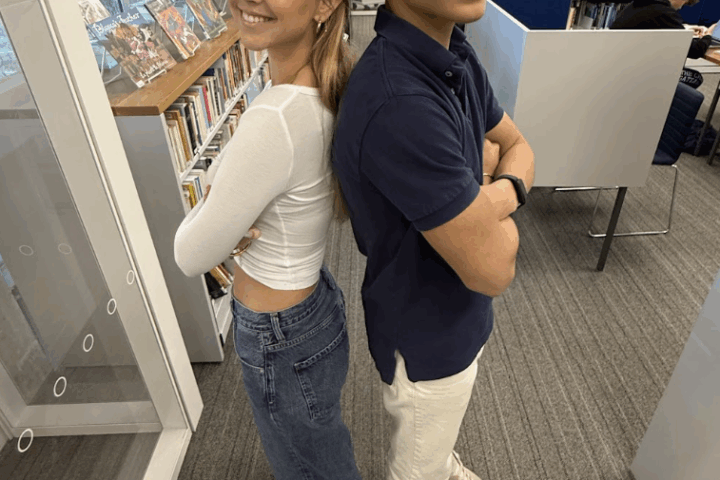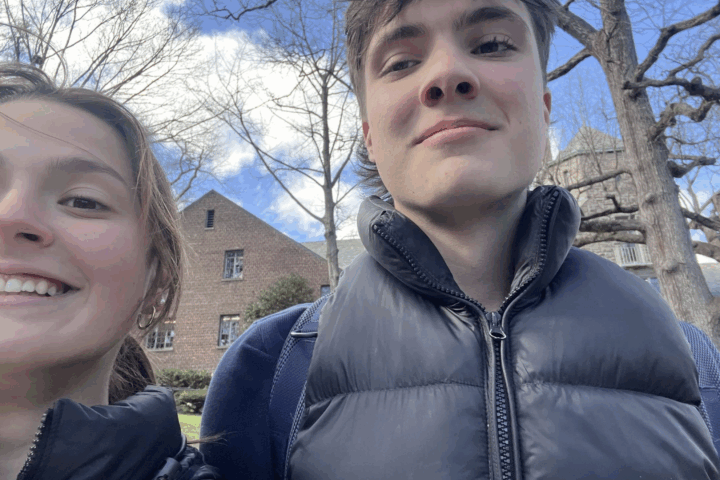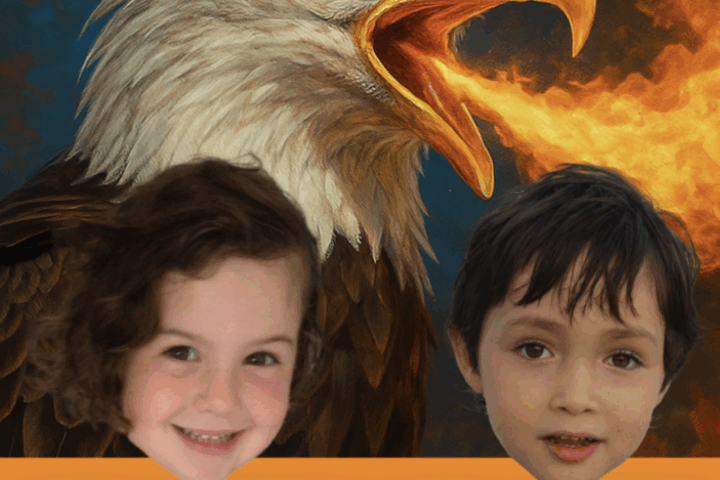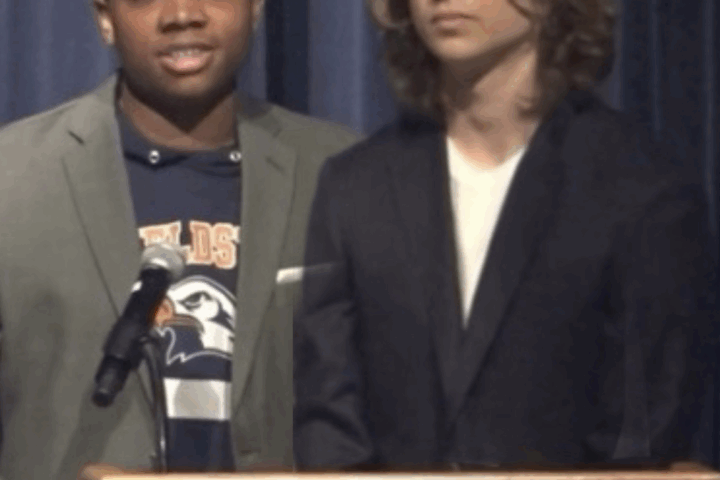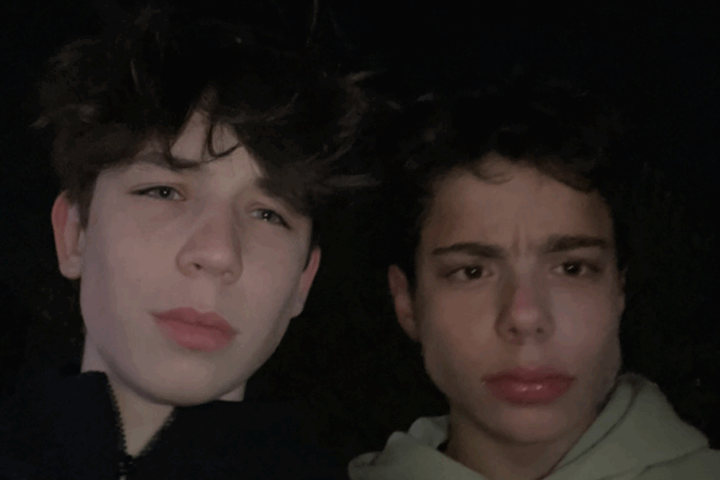Each year, right at the front desk as you come up the stairs, The Tate Library presents its Banned Books Exhibit. It’s not the usual arsenal of new books or featured books or special project books. Each one has been censored, targeted, hit with a “PROHIBITED” or “FORBIDDEN” sticker, giving the exhibit an ominous Orwellian Big Brother feeling. If you want to know what totalitarianism or intolerance looks like, this public display will give you a pretty good sense. These books are part of The Tate collection and are easily accessible at Fieldston or in New York City. But they have been prohibited in many parts of the country and the world. They’ve been purged from the shelves by bureaucrats, government officials, members of local school boards, town clerks, religious leagues and even by school administrators and teachers. Somehow, they have run afoul of doctrinal purity or pure prejudice. Somewhere, people took advantage of their power, to shun ideas and voices from the reading public.
But not here. As a rule of thumb, librarians tend to be champions of free expression; custodians of the right to read. The list of reasons for banning these books is extensive and multifarious. Whether it be the use of certain language, racial issues, political commentary, violence or danger, a matter of age, authoritarians outlaw books with infinite “justifications.”
The Banned Books Exhibit at The Tate was inspired by the American Library Association’s list of the most challenged books. The ALA web page has a preview of the organization’s intentions. It reads as follows: “The American Library Association condemns censorship and works to ensure free access to information. Every year, the Office for Intellectual Freedom (OIF) compiles a list of the Top 10 Most Challenged Books in order to inform the public about censorship in libraries and schools. The lists are based on information from media stories and voluntary reports sent to OIF from communities across the U.S. The Top 10 lists are only a snapshot of book challenges. Surveys indicate that 82-97% of book challenges – documented requests to remove materials from schools or libraries – remain unreported and receive no media.”
As is evident from this text, the American Library Association is committed to the free exchange of opposing literary works; they encourage different viewpoints, different experiences and encourage the freedom to read altogether.
The top ten books this year include:
- George by Alex Gino
- Stamped: Racism, Antiracism, and You by Ibram X. Kendi and Jason Reynolds
- All American Boys by Jason Reynolds and Brendan Kiely
- Speak by Laurie Halse Anderson
- The Absolutely True Diary of a Part-Time Indian by Sherman Alexie
- Something Happened in Our Town: A Child’s Story About Racial Injustice by Marianne Celano, Marietta Collins, and Ann Hazzard, illustrated by Jennifer Zivoin
- To Kill a Mockingbird by Harper Lee
- Of Mice and Men by John Steinbeck
- The Bluest Eye by Toni Morrison
- The Hate U Give by Angie Thomas
This particular list is from 2020, and is linked. ALA Banned Books
The Tate Library is contributing to the mission of the ALA by displaying these books here.
There is sometimes confusion about the exhibit. As middle schoolers see the “DANGEROUS BOOKS!” they think The Tate Library is banning the books, and they ask why they can’t check out these works. The librarians explain the meaning of the exhibit.
Ms. Elwood described the interaction. “The most common reaction from students when they see the display tends to be confusion, followed by the question “Why are you banning these books?” Of course The Tate library does not ban books, so this display is a great way to show students how controversial a simple book can be, and highlights the power of reading.”
The ALA’s Top 10 list for 2020 is fascinating, and in many ways nerve racking. Number one on the list, George, was “challenged, banned, and restricted for LGBTQIA+ content, conflicting with a religious viewpoint, and not reflecting ‘the values of our community.” The Quran and Bible are both on The Tate exhibit, reflecting the intense desire to block the access or spread of these faiths. Other books range from To Kill a Mockingbird, which was once prohibeted because it broke down racial barriers nad is now prohibited in some places “for racial slurs and their negative effect on students,” to Stamped a book “challenged because of author’s public statements, and because of claims that the book contains ‘selective storytelling incidents’ and does not encompass racism against all people.” Even Harry Potter was banned in 2019 for “referring to magic and witchcraft, for containing actual curses and spells, and for characters that use ‘nefarious means’ to attain goals.”
So, books are being banned for being too specific, for being too broad, for being too different, too “nefarious” and for sharing personal experiences. While it is not a complete surprise that Toni Morrison has been banned, I am utterly shocked that there are people, especially in the academic world, who might prohibit such mind-expanding literature.
As Ms. Colgan explained, The Tate Library “wants to shock people into realizing that there are people that want to ban these books and take them out of circulation.” She also discussed The Tate’s own commitment to free reading. By displaying the ALA’s Top 10 list, the librarians are showing our own community the severity of this situation, and they are emphasizing and celebrating a choice we are all lucky to have. At The Tate and at Fieldston (ideally it would be all across the country), the liberty to read what you want and who you want is one that we all deserve and have.

